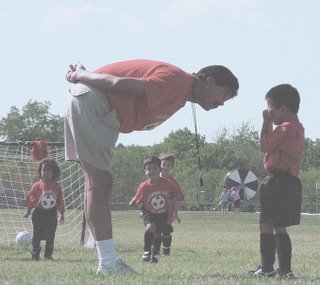Tuesday, November 14, 2006
Study: Abused children stay highly attuned to anger
Even the subtlest hints of anger or hostility in their environment set physically abused children on prolonged "alert," even if a conflict has nothing to do with them.
The tendency to stay attentive of nearby discord is probably a natural form of self-preservation in children who routinely face aggression. But it may also explain why abused children are often so distracted at school, write researchers from UW-Madison, in the journal Child Development (September 14, 2005).
Led by Seth Pollak, a professor of psychology, psychiatry and pediatrics, the UW-Madison team tracked biological markers in 11 abused four and five-year olds who play a computer game in one room when suddenly a clearly audible, heated argument erupts between students next door.
Unbeknownst to the children, the "argument" - over an incomplete homework assignment - was actually a scripted dialogue performed by two actors.
Both abused and non-abused children initially displayed signs of emotional arousal, such as sweaty palms and decelerated heart rates, in reaction to the angry voices in the next room. Heart rates often decelerate prior to a "fight or flight" response, says Pollak, who is also a researcher at the UW-Madison Waisman Center for Human Development.
But though heart rates of non-abused subjects soon rose back to normal levels, heart rates in the abused group remained low. The abused children could not completely break their attention away from the next-door argument, even when it ended peacefully, Pollak says.
"What's really interesting about this experiment is that the abused children were taking their attention resources and redeploying them into something that had nothing to do with the children at all," says Pollak. "That provides an important clue about why these children are having interpersonal problems."
The UW-Madison work builds on past experiments in which Pollak has aimed to understand the developmental mechanisms that may lead abuse victims to adopt unhealthy behaviors later in life, such as aggression, social anxiety and addictions. "Several psychologists had put forward some very sophisticated theories about the outcomes of child abuse but no one had offered any brain-based cognitive models to explain why those outcomes occur," Pollak says.
Consequently, in 1999, Pollak showed that electrical brain activity spikes dramatically when abused children view digital images of angry faces. That result was not too surprising, he says. "Obviously, abused children's brains are doing exactly what they should be doing - they are learning to cope with their situation."
The latest work explores whether abused children react similarly to anger in real life situations, or in this case, experimental simulations of the real world. Pollak says the next step will be to discern exactly which neural systems and brain regions are most affected after physical abuse. "Knowing this specificity could help us figure out ways to eventually intervene in tailored ways."
Other study co-authors included undergraduate student Shira Vardi (now a UW-Madison graduate student in social work), psychology research specialist Anna Bechner and assistant professor of psychology John Curtin.
by Paroma Basu
Source: University of Wisconsin
Subscribe to:
Post Comments (Atom)


No comments:
Post a Comment